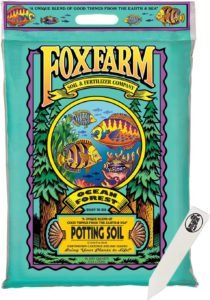I recently bought an orphaned and sickly fiddle leaf fig from Home Depot and brought it home to bring back to full health. The plant was so infested with scale insects that it didn’t grow a new leaf for six whole months.
This isn’t my first time battling scale infestations. I’ve also dealt with them on my peperomia, pothos, and monstera. I wrote a whole guide on how to kill scale on indoor plants if you want more tips and in depth information about the scale insect.
I’ll go through it a little bit here and then walk you through the steps I took to bring my fiddle leaf fig back to life.
How to get rid of scale on fiddle leaf figs
These soft bodied insects have a quick life cycle that makes it hard to stay on top of a bad infestation. If left untreated, like my fiddle leaf, then the plant would eventually die.
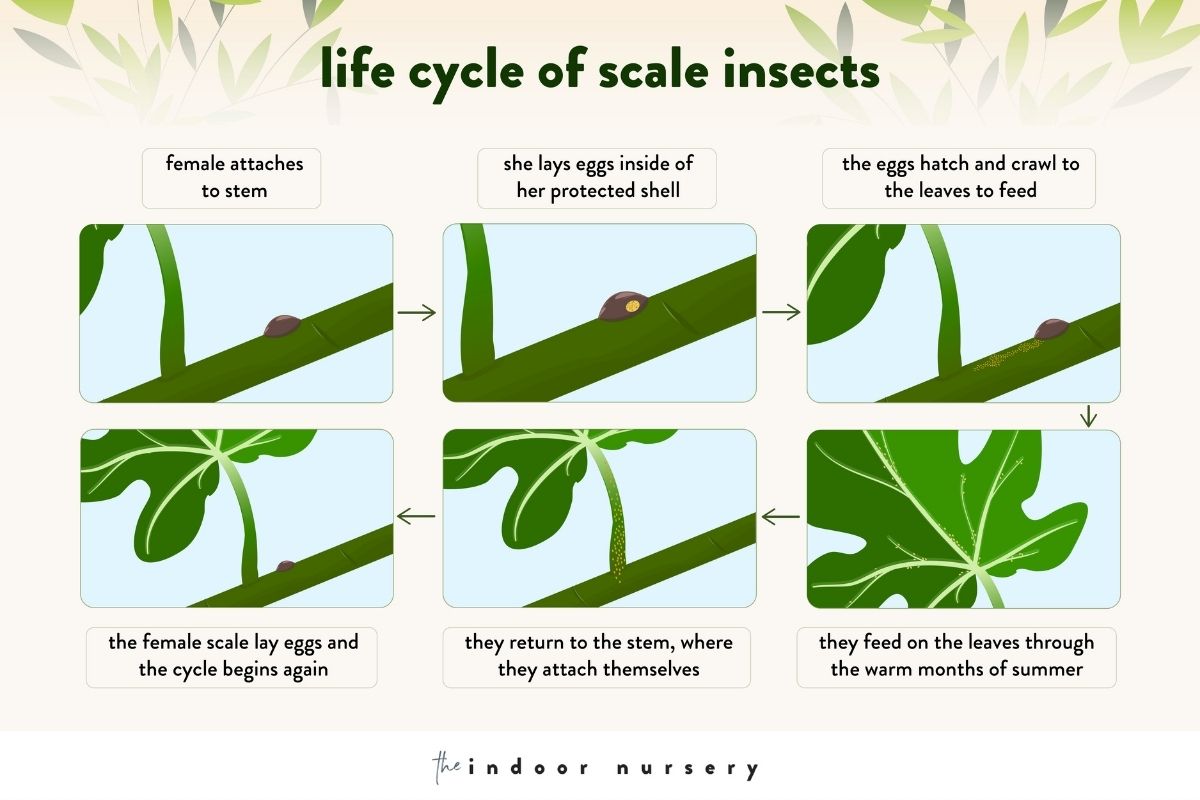
Apparently, the females attach themselves to the leaves and develop a hard shell where they eventually grow their eggs. The males can fly and enter underneath the hard shells to inseminate the females.
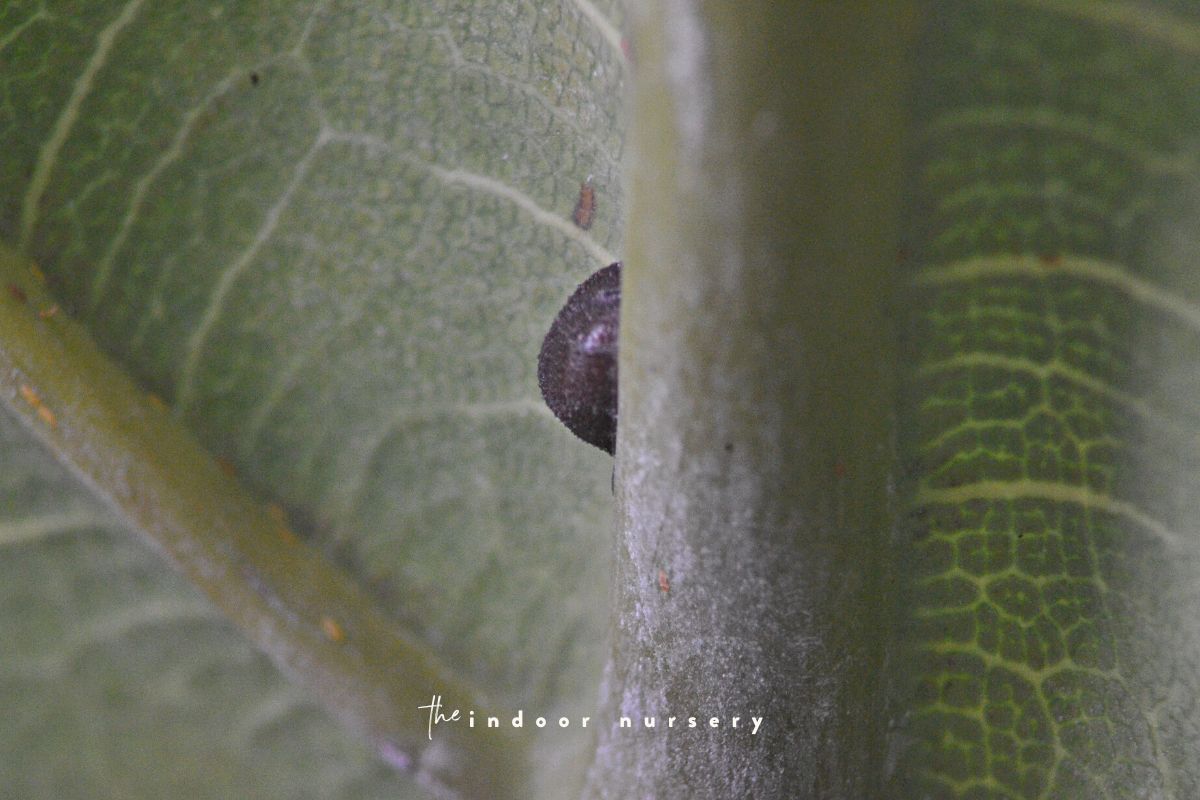
I haven’t noticed any flying males near the plant but I’ve noticed what seems to me a mature female, an adolescent scale insect, and a recently hatched brood or litter or whatever you call them.
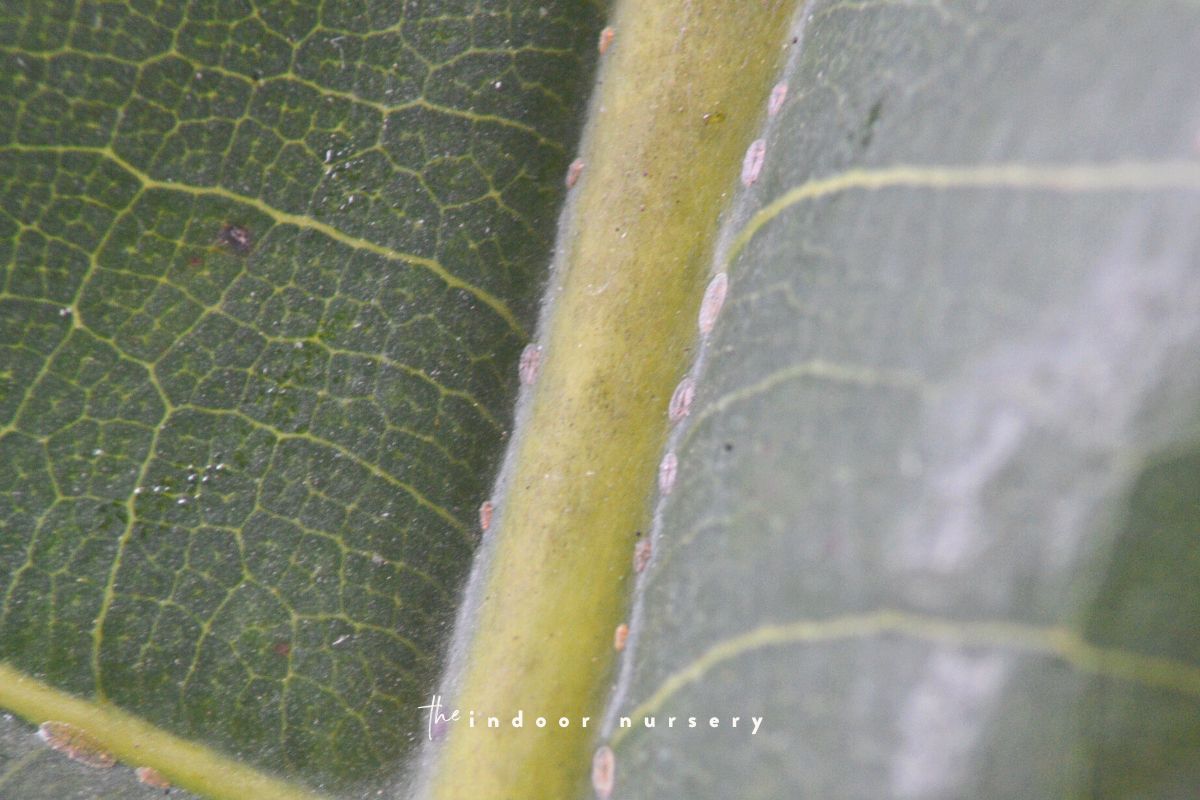
Scale insects feed on plant sap, latching most commonly on the soft tissue near plant veins or new growth. If left untreated, the insects will suck all of the nutrients out of the plant and cause stunted growth, one of the first noticeable signs of a scale infestation (if you aren’t already carefully inspecting the leaves).
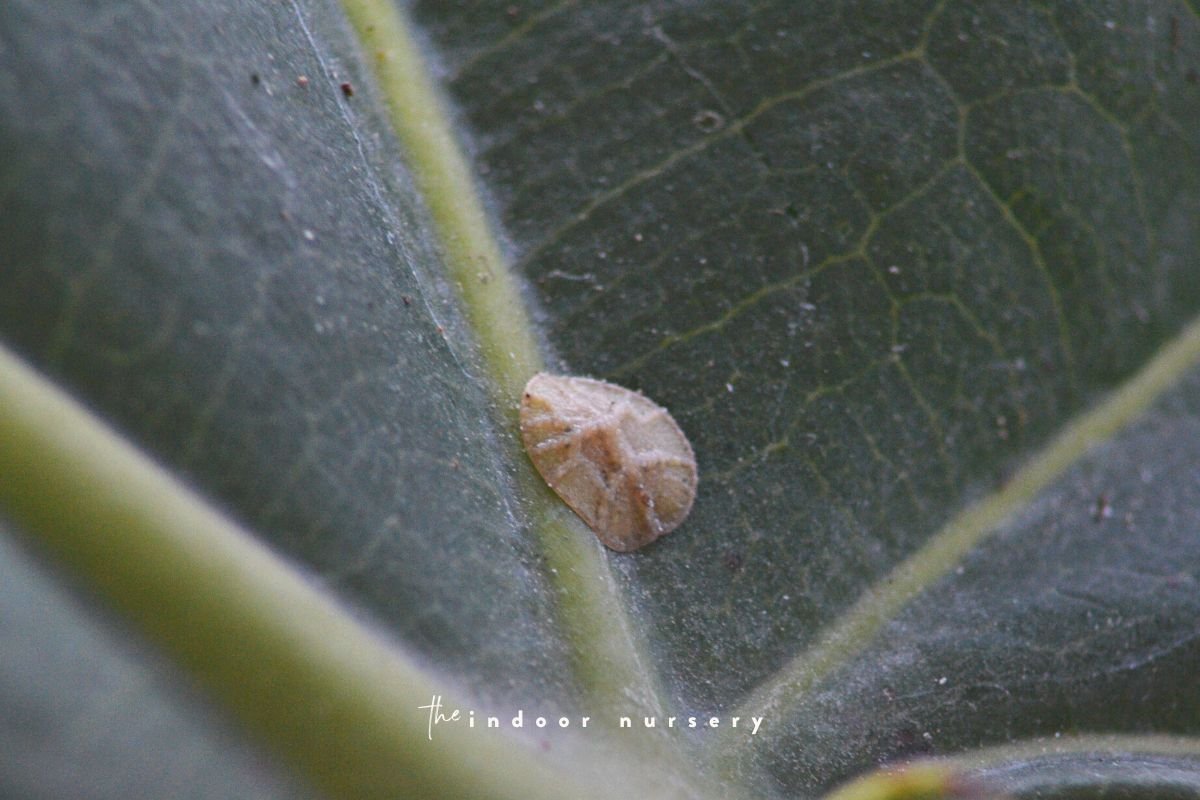
One of the telltale signs that there is some kind of pest infestation is when there are little ants marching up and down the leaf veins as if they’re searching for something. This is because they are.
Scale insects leave a sticky residue that ants love. The ants basically fight off any natural predators so that the scale insects can continue leaving behind their sweet sticky substance for the ants to gobble up. Because it takes a long time to treat scale, fighting the never-ending life cycle and all, I usually watch for ants and let them lead me to the nearly invisible adolescent scale insects.
So how did I finally beat the scale?
Step 1: pick them off
First, you gotta get rid of these gooey little suckers. I used a toothpick to get underneath them and carefully remove them from the infested plant. Be careful not to damage the tissue of your precious plant.
Step 2: assess overall plant health
Before you can move forward with your treatment, you need to figure out if your fiddle leaf fig tree can handle treatment. My fiddle leaf fig was very weak so I simply wiped the whole plant down with a cotton ball soaked in rubbing alcohol. This both removed the sticky substance and any hidden eggs or insects that I might have missed.
If you have caught the infestation early on and your plant is still strong, then you can move onto Step 3. If not, then skip to Step 4. Since you’ll likely need to repeat this process every few weeks, you can incorporate Step 3 when you feel that your plant is healthy and strong enough. Be sure to read my tips below for supporting your fiddle leaf fig’s immune system.
Step 3: spray with insecticide
If you feel that your plant is strong enough, then you can spray the whole plant with your chosen insecticide.
- For mild infestation + strong plant. I like mixing essential oils that treat common pests with Dr. Bronner’s castile soap and filtered water. Mix in a spray bottle and spray the leaves generously.
- For bad infestation + strong plant. Mix neem oil in a spray bottle and spray affected areas. You can also try an insecticidal soap with caution.
- For mild infestation + weak plant. I mixed rubbing alcohol, white vinegar, and filtered water in a spray bottle for my fiddle leaf fig.
Step 4: wipe with damp cloth (optional)
The goal of using insecticidal soaps or mixes is to kill the insects (RIP). So once those insects have passed, we don’t need to continue treating the plant tissue. This is especially true for weaker plants. I’m paranoid because I once burnt a plant when I covered it with insecticidal soap, so I like to be extra cautious now. Since we have to repeat this process every few weeks, I’m okay with the gentler approach.
Step 5: sprinkle powdered cinnamon on the soil
I had been doing steps one through four for six months until I finally added cinnamon powder to the soil to kill off any hidden scale insects. Despite treating the leaves every week and picking off whatever scale insects I could see with my naked eyes, they continued to return. I started to think that there were insects or eggs hidden beneath the surface of the potting soil, so I wanted to treat the potting soil too. Three weeks after adding cinnamon to the soil, the fiddle leaf popped out two new leaves.
Cinnamon is a powerful insecticide and can be used as cinnamon essential oil or cinnamon powder. Cinnamon essential oil can be quite strong when sprayed directly onto the plant, so I opted for cinnamon powder in the soil instead.
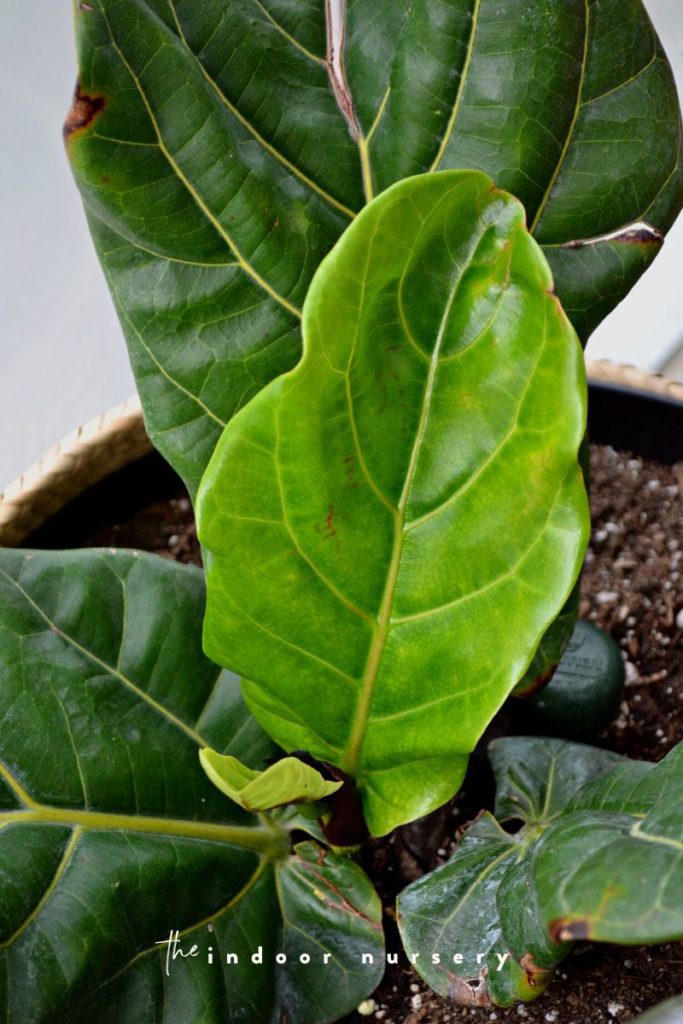
Tips for supporting your fiddle leaf with scale
The best way to help get rid of scale on fiddle leaf fig plants (and other houseplants) is to boost the immune system of the plant. I find liquid fertilizer to be an excellent option for healthy plants, but too strong for weaker plants. Here is what I do instead:
- Add fresh soil. I swear by Fox Farm soil. Every time I add this soil mix to my potted plants, they go wild with new growth. If your infested plant can handle repotting, then pop it into some Fox Farm soil and let the plant nutrients do their magic.
- Water regularly. Without overdoing it and causing root rot, give your infected plant the water it needs to support new growth.
- Repeat the process weekly. Go through this process every week if you need to (you will). If your plant is weak, then start out gently with soapy water and a cotton swab. Work your way up to rubbing alcohol, insecticidal soaps, and neem oil. Be diligent about picking the little buggers off because they multiply quickly.
Closing thoughts
Good luck with your scale infestation and let me know what ended up working for you! I’d love to hear it.
More About Pest Control
- How To Get Rid Of Scale On Plants
- The Best Neem Oil For Plants: Our Top Picks
- How to make homemade spray to keep cats from eating plants
- 12 essential oils for plants that treat pests, fungus, and more
- How to mix neem oil for plants with 3 simple ingredients
- What plants NOT to use neem oil on
- Most common cannabis pests and how to treat them




